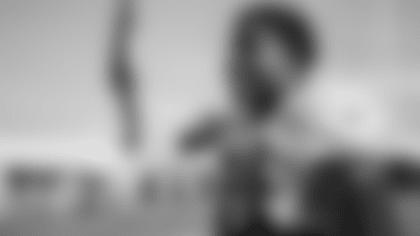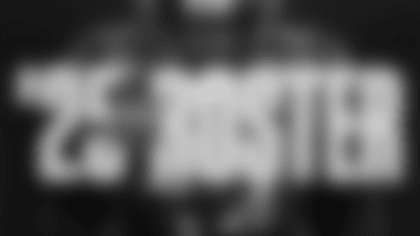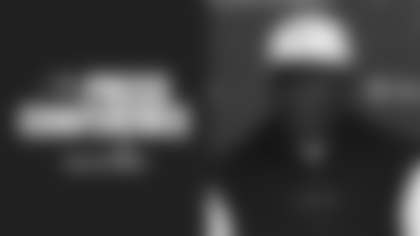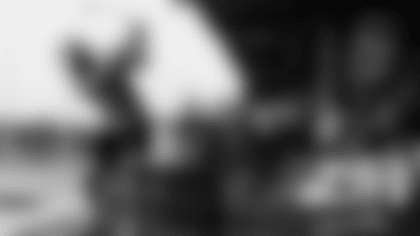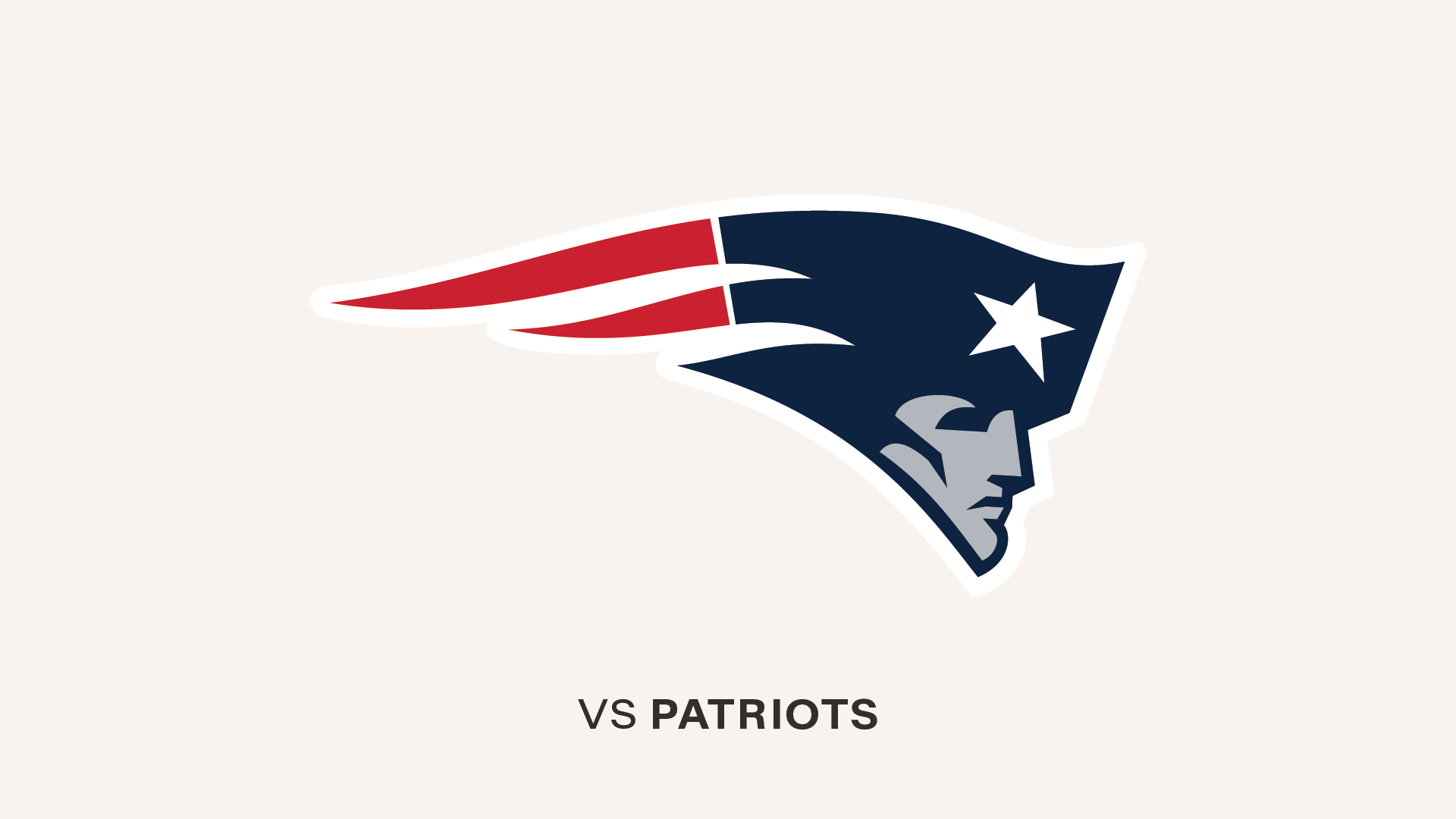Another seven days checked off the summer calendar, another week closer to training camp.
The Tampa Bay Buccaneers will report to camp on July 30, which means the 2010 NFL season is almost upon us. That's good news for everyone, of course - football is back! - but it also signals the beginning of some stressful weeks for those in charge of shaping the team for the start of the regular season.
The Buccaneers will take 80 players to training camp. After three weeks of two-a-days, four preseason games and countless back-room meetings, they will emerge with a 53-man crew to take into battle against the Cleveland Browns on September 12. Making that transition from 80 to 53...that's the work to be done in August and the first few days of September.
Last week we examined the offensive positions, the possible target numbers at each spot and the issues that will help shape the final decisions. Now, we'll do the same for the defensive positions, plus punter and kick returner.
As before, we'll assume that the five remaining unsigned players (four draft picks and one restricted free agent) will be part of the 80-man group to begin camp. Technically, we'll be assessing an 84-man roster, as the Bucs are currently at that number while the four draft picks await their first contracts.
We'll also repeat this as it pertains to the other assumptions and suppositions in the paragraphs ahead: this is not meant to reflect the opinions of the Buccaneers' coaching staff or player personnel department. Team management prefers to keep their roster evaluations to themselves during camp and the preseason, and for good strategic reason.
**
Defensive Line
Players currently on the roster: 14
Likely number carried on the 53-man roster: 8 or 9
Starting spots to fill: 4
Returning starters: 2
We considered splitting this category into ends and tackles, but in the end chose to assess it as one unit because the issue of position versatility could be critical in how the final numbers shape up. That is, the presence of a player (or players) who can successfully play both inside and outside on the line can make the coaching staff feel better about the depth at both spots and potentially keep a tighter crew.
The Buccaneers finished the 2009 season with eight defensive linemen on the 53-man roster, but only because end Jimmy Wilkerson went on injured reserve before the final game. For every other game last fall, the D-Line corps was nine strong. That usually included five ends and four tackles, though Kyle Moore and Michael Bennett were both considered capable of playing inside. Even sizeable defensive tackle Dre Moore saw a little early-season action at end when the Bucs were hit with a string of injuries.
There may be no position on the current roster that will be more volatile than the D-Line in this year's camp. There will absolutely be at least two new starters, as Wilkerson and defensive tackle Chris Hovan now call New Orleans and St. Louis their NFL homes, respectively. Wilkerson started the first 15 games at left end last season and was a steady, productive performer. The Bucs' depth chart refers to both inside men as "DTs," but Hovan was essentially the team's nose tackle for the past five seasons.
The Buccaneers obviously set an interior overhaul in motion this past spring when they used their first two draft picks on defensive tackles (Gerald McCoy and Brian Price) and subsequently released Hovan. In addition, the team made DT Roy Miller the first defensive player drafted by the new leadership duo of Mark Dominik and Raheem Morris just one year earlier. As such, a young presence at defensive tackle is one of the surest 53-man roster bets heading into training camp. In the Bucs' 35-year history, no first or second-round pick has ever failed to make the team, and third-rounder Miller definitely impressed the staff last year.
The Bucs' other starting DT, Ryan Sims, does return for another training camp and will battle to hold on to his spot in the opening 11 in the face of all the new young talent. Dre Moore is back, as well, after improving significantly in his second year in the NFL, making rookie free agent Carlton Powell the one new addition to the group. As mentioned above, both Kyle Moore and Michael Bennett could factor into the interior-line decision-making, too.
Even if the overall defensive line corps skews differently than it did last year, with more than four interior players in the picture this year, the competition for jobs will be stiff. Even after securing a spot among the regular-season 53, a DT will have to fight hard for snaps with McCoy and Price presumably now in the mix. The Buccaneers may have had nine linemen on the team for most of the year last fall, but they usually kept only six of them active on game days. Again, the decision of whether to keep six or seven pass-rushers active can often rest on the presence, or lack thereof, of a player who can function inside and out.
The defensive end position appears much more difficult to predict in these pre-camp days. The draft didn't produce an obvious candidate to compete immediately for Wilkerson's spot; the only end taken among the Bucs' nine picks was seventh-rounder Erik Lorig of Stanford. With Wilkerson gone, the two players with the most starts last year are Stylez G. White, who opened eight games on the right edge and Tim Crowder, who had two starts each at left and right end. Morris has spoken highly of the progress made this offseason by K. Moore, a fourth-round pick out of USC last year, calling him a strong candidate for a starting job.
Since the players considered most likely to be "swing" linemen are both nominally ends - K. Moore and Bennett - that would seem to make it more likely the team would keep five edge rushers rather than interior men. That would come from a pool of eight candidates: White, Crowder, Moore, Bennett, Lorig, James Ruffin, George Johnson and Brandon Gilbeaux. Ruffin, Johnson and Gilbeaux are all undrafted rookies and, while definitely an intriguing bunch, quite obviously wild cards at this point.
Since no pads have yet been donned and there has been no real contact during the offseason, the Buccaneers' coaching staff hasn't truly had a chance to evaluate the seven rookies and first-year players among the defensive linemen yet. If enough of the newcomers emerge, would the team consider keeping 10 or more linemen, rather than last year's usual total of nine? It's possible, of course, but any addition to this unit means a subtraction somewhere else, probably on defense, and that can make it difficult to balance the roster. Since backup linebackers and defensive backs are much more likely to be core special teams players than D-Line reserves, those two back-seven groups usually have a better chance to add to their numbers.
**
Linebacker
Players currently on the roster: 9
Likely number carried on the 53-man roster: 6 or 7
Starting spots to fill: 3
Returning starters: 3
The Buccaneers have a very young linebacking corps, as well, but there is less fat to trim in this group to get down to the usual number kept during the regular season. In addition, the team returns all of its 2009 starters as well as two of the three reserves with which it finished last season, Adam Hayward and Niko Koutouvides.
The Bucs' two OLB starters, Quincy Black on the strong side and Geno Hayes on the weak side, got their first opportunities to start last year and performed well, particularly in the second half of the year. They flank one of the team's most critical starters, middle linebacker Barrett Ruud. With so many young players likely to be in the mix on defense this year, the Buccaneers are counting on Ruud's experience and leadership to help the unit come together and find success on Sundays.
The primary addition to the linebackers group this year is sixth-rounder Dekoda Watson out of Florida State. Watson follows in the successful Seminole-to-Buccaneer path blazed by Derrick Brooks and Geno Hayes, but physically he is more accurately compared to Black. Like all young linebackers hoping to secure roster spots - Hayes being an excellent example two years ago - Watson may need to first make his mark on special teams.
Former Raider Jon Alston was one of a handful of free agent signings made this offseason by the Buccaneers. Alston first established himself as a strong special teams presence in Oakland, then started a handful of games in each of the past two seasons. The corps is rounded out by first-year man Lee Robinson, who spent part of 2009 on the Bucs' practice squad, and Rico McCoy, an undrafted rookie out of Tennessee.
There appears to be less intrigue surrounding the linebacker position than most, with the starting positions seemingly secure and the likelihood of a majority of the candidates making it through the final cut. That would be particularly true if special teams considerations prompt the Bucs to keep seven linebackers, rather than the six that was most common last year. It's worth noting that the team did carry seven linebackers at times last season before Rod Wilson, a good special-teamer, was lost to injured reserve at midseason.
**
Cornerback
Players currently on the roster: 7
Likely number carried on the 53-man roster: 4, 5 or 6
Starting spots to fill: 2
Returning starters: 2
We feel more comfortable splitting up the secondary than the defensive line because the cornerback/safety swing players come along less often. Tanard Jackson obviously retains the coverage skills he nurtured as a college cornerback, but the Bucs will be keeping their rising star at safety, undoubtedly. Jackson could find himself moving closer to the line in certain nickel or dime packages, but that alone is not likely to affect the overall numbers at cornerback.
Many other things will, however. Cornerback is one of the more volatile positions on the team in terms of depth, and not just because 11 different corners occupied Buccaneer roster spots at some point during the 2009 campaign. The team actually started the season with six cornerbacks in Week One before dropping back to four just a week later. The number swelled back to five in Week Three, dropped again to four in Week Five, bumped up to six for a few games at midseason, settled back in at five until December and then finished the last two weeks back at four.
Essentially, that's an indication that good cornerback depth is difficult to find, and the Bucs were looking in every nook and cranny last year to uncover more of it. That also makes the final number kept by the Buccaneers in September more difficult to predict than at most positions, particularly because special teams considerations play a big role among defensive backs.
The team does have its two established starters back in Ronde Barber and Aqib Talib. Barber, in fact, is the team's longest-tenured player at any position, and though he has 13 NFL seasons under his belt he still played very well in 2009. Talib, meanwhile, has nailed down the left cornerback position and could be one of the Bucs' best players for years to come.
Less concrete is the matter of nickel back, where there are many candidates but no sure thing. Third-year man Elbert Mack has the most experience, having seen significant action in that role in each of his first two NFL seasons. The Bucs are also high on 2009 draftee E.J. Biggers, who looked very promising in training camp a year ago but then lost his season to a shoulder injury. And, obviously, management didn't spend a high third-round pick on Vanderbilt's Myron Lewis thinking he would be a long-term project. At 6-2 and 203 pounds, Lewis is already the Bucs' biggest cornerback, and that alone makes him an interesting candidate for the nickel job in a league awash with huge receivers.
Both Brandon Anderson and Derrick Roberson used the practice squad as a springboard to the regular-season roster last year; the latter held down a spot among the 53 for the final eight games, appearing in six of them. There are, however, no undrafted rookies in the cornerback group this year; Lewis is the closest thing the Bucs have to an unknown commodity at the spot. If enough of the Bucs' seven cornerbacks excel in training camp next month, this unit could see far fewer cuts than most.
**
Safety
Players currently on the roster: 8
Likely number carried on the 53-man roster: 3, 4 or 5
Starting spots to fill: 2
Returning starters: 2
If not for injuries, the Bucs' safety position would likely have seen a lot less upheaval last year than its cornerback cousins.
The team went into the season with three safeties it considered starting-caliber in Jermaine Phillips, Sabby Piscitelli and Will Allen and no other depth at the spot. An offseason experiment with Phillips at linebacker was shelved when Jackson was forced to miss the first four games. Phillips landed on injured reserve after just two games but the Bucs restocked the safety position before Week Three by signing Corey Lynch off the Bengals' practice squad.
Upon Jackson's return in Week Five, the team stayed with four safeties until Allen joined Phillips on IR after Week Eight. After the loss of Allen, the Bucs stuck with three safeties until signing first-year man De'von Hall for one contest at the end.
The Bucs' coaching staff still believes it is essential to enter the season with three players capable of filling the two starting spots, which surely prompted the move to sign free agent Sean Jones. Jones, a former starter in Cleveland and Philly and one of the best ballhawking safeties in the NFL, joins Jackson and Piscitelli as the most likely players to make up that trio. After a season in the Bucs' system, Lynch will work his way into that competition, as well.
Unlike at cornerback, the Bucs also added a healthy dose of young blood to the roster at safety this offseason. Hall is essentially a newcomer after he was claimed off waivers from the Colts at the end of December. The draft also brought a new safety in seventh-rounder Cody Grimm, who had an eye-opening offseason and is expected to be a factor on special teams. The Bucs also added two undrafted free agent safeties in Tennessee's Dennis Rogan and, just a few weeks ago, Nebraska's Matt O'Hanlon.
Given that the team carried as few as three safeties for a good portion of the season last year, this position could be one of the toughest at which to secure a spot. Even at the more common number of four, half of the candidates would be in danger, though the practice squad is frequently a landing spot for green but promising defensive backs. Of course, the final number will also be affected by what the team believes it has at cornerback. It's not unusual for a team to keep five safeties and one fewer cornerback, particularly if it has a safety like Jackson who can help in nickel situations.
**
Punter
Players currently on the roster: 1
Likely number carried on the 53-man roster: 1
Starting spots to fill: 1
Returning starters: 1
Like kicker, punter is not technically a starting position, but it is a front-line job that has to be won by someone.
However, there isn't much analysis needed at this position. Rookie Brent Bowden, a sixth-round pick out of Virginia Tech, is currently the lone candidate for the job. The Bucs hope they have found a young punter who can hold on to the spot for years to come. If Bowden does falter, his competition would have to come from outside the current roster.
**
Kick Returner
Players currently on the roster: N/A
Likely number carried on the 53-man roster: N/A
Starting spots to fill: 1 or 2
Returning starters: 1 or 2
You'll notice the numbers above don't follow the format as the rest of the positions. That's because the job of "return man" is not as clearly defined on the roster, and the job can actually be shared by several players.
There is no set number of kick returners on the current roster, nor necessarily a target number to keep on the 53-man crew. A majority of NFL kick returners are at least reserves at some other position, so their spots on their respective rosters are not solely dependent on how well they do in the kicking game. In some cases, a player's skills as a returner are just a bonus for his team - think Joey Galloway's occasionally forays into punt returning for the Buccaneers.
As for the "starting job," it can be considered one if the primary return man is adept at bringing back both punts and kicks, or two if the team identifies separate players it feels are best at each job. For the past two seasons, the Bucs have relied mostly on one man for both jobs - 2008 Pro Bowl return man Clifton Smith.
Smith returns in 2009 and is the obvious front-runner for both jobs. It's worth noting, however, that two other players on the 80-man roster returned kicks for touchdowns for the Buccaneers last year - Sammie Stroughter on a kickoff and Micheal Spurlock on a punt. Of those two, Stroughter is the more obvious candidate to have a sizeable role in the passing game.
With a dynamic player such as Smith at the head of the line, the primary task in camp may be to identify what sort of depth the team has at the return position. Are any of the Bucs' new receivers a possibility at the spot, including highly-touted draftees Arrelious Benn and Mike Williams? Can Spurlock, a college quarterback, increase his chances at a roster spot by emerging as a receiver? Which other newcomers have hidden return skills? Expect to see quite a few players take their turns when the Bucs run special teams drills in training camp.





